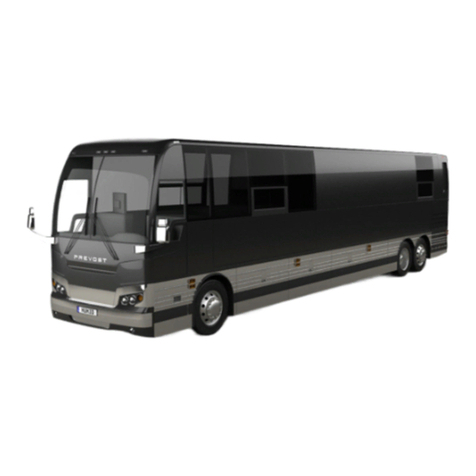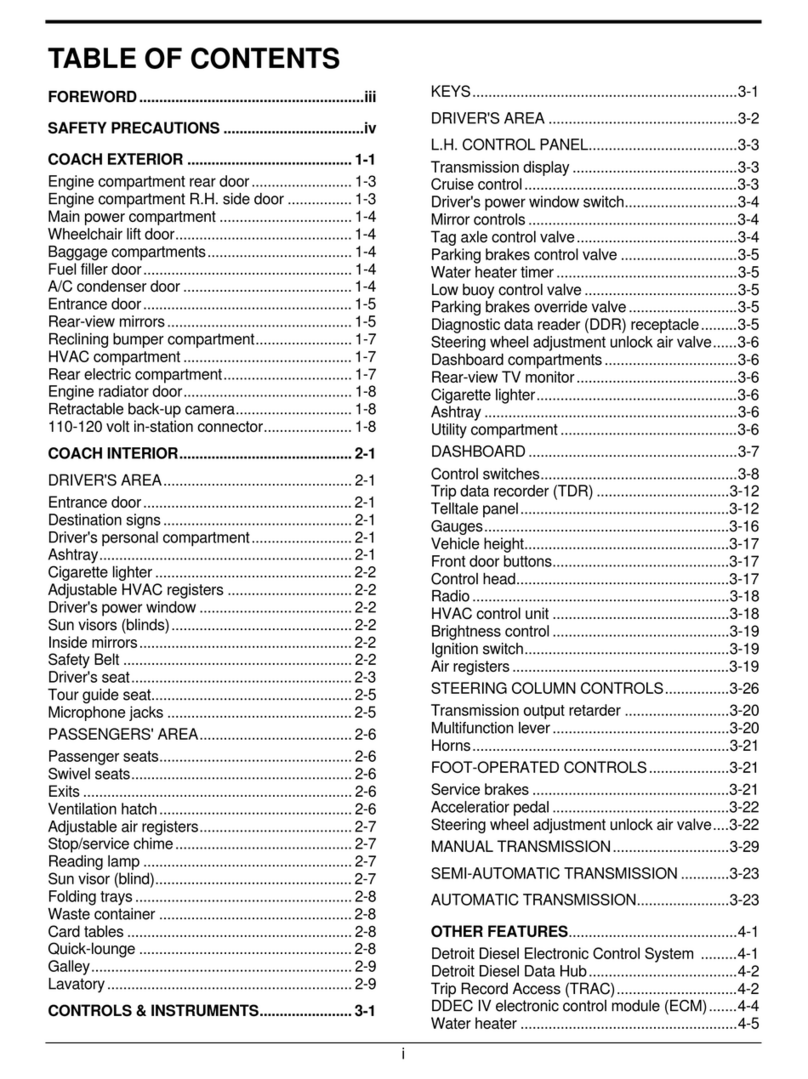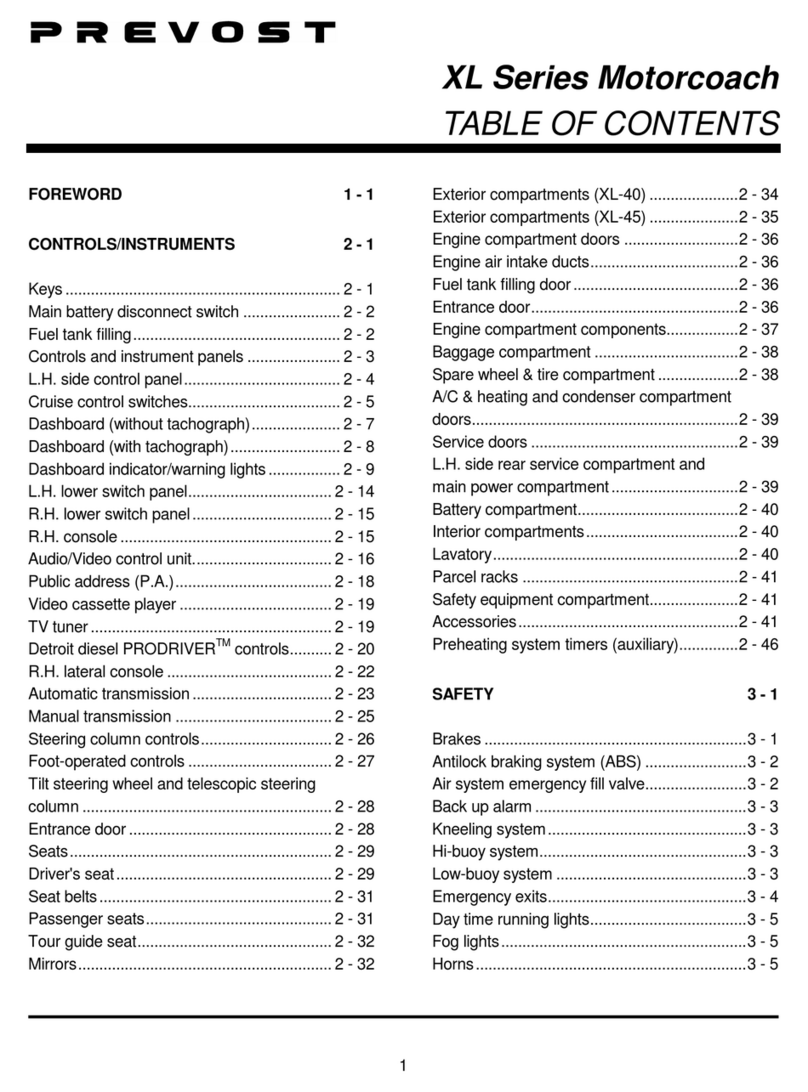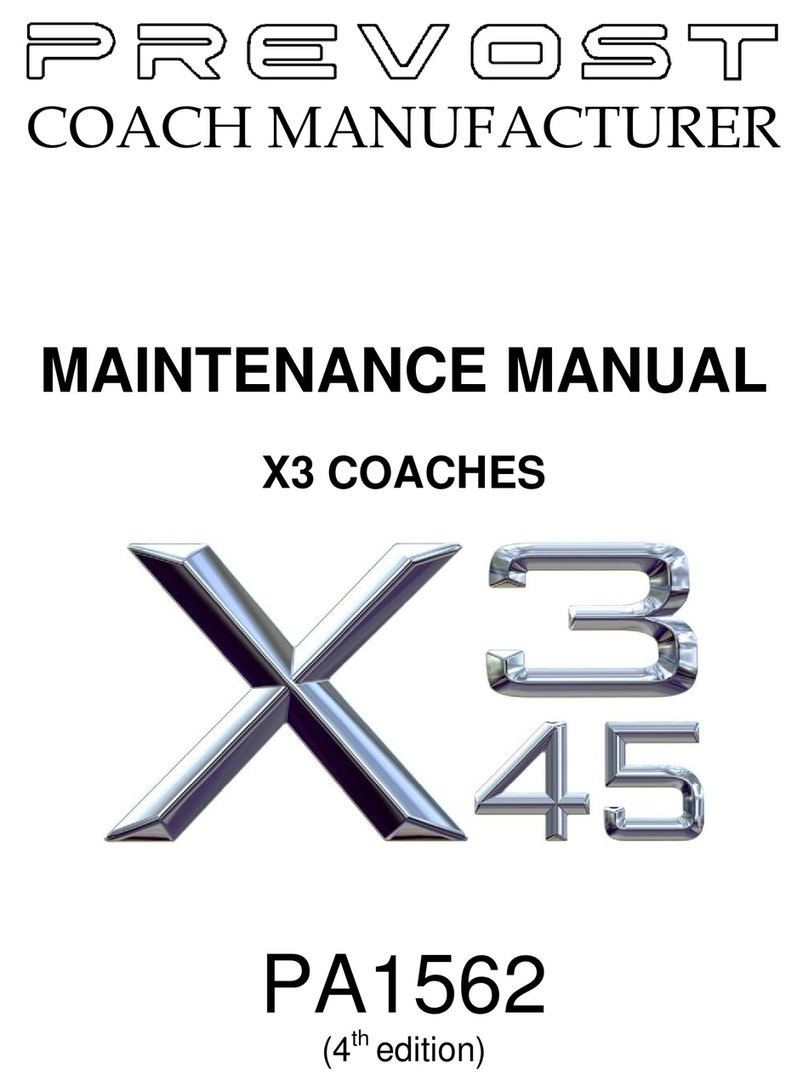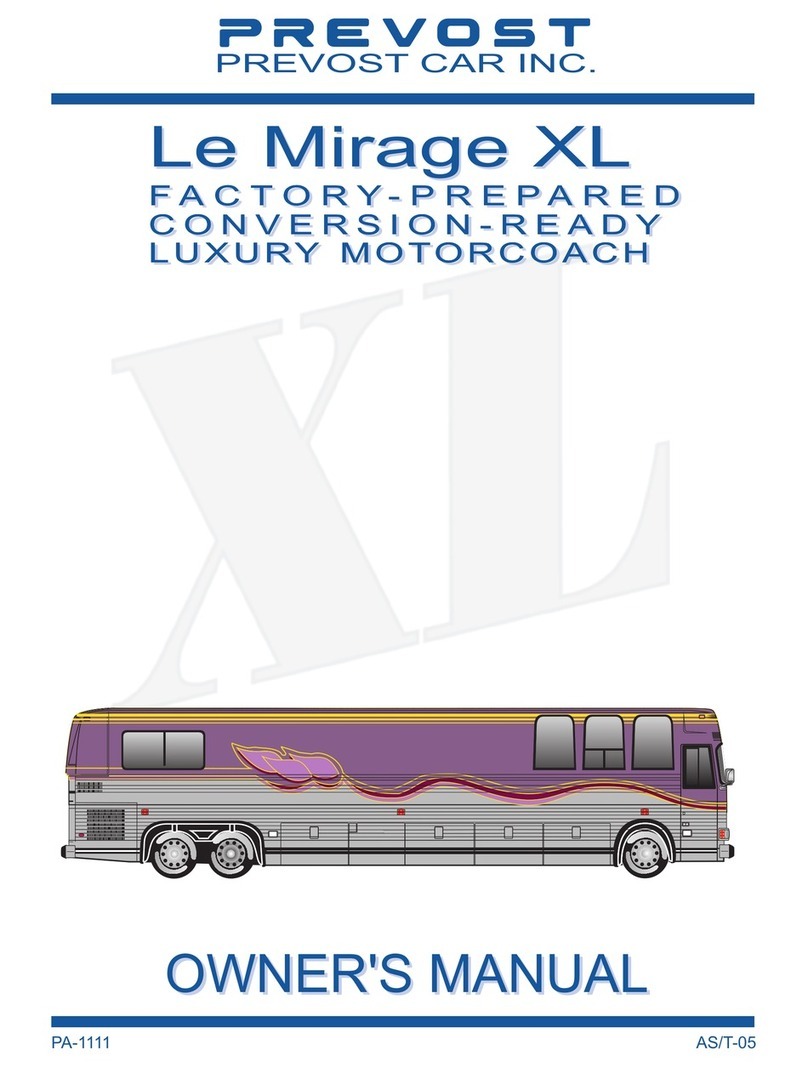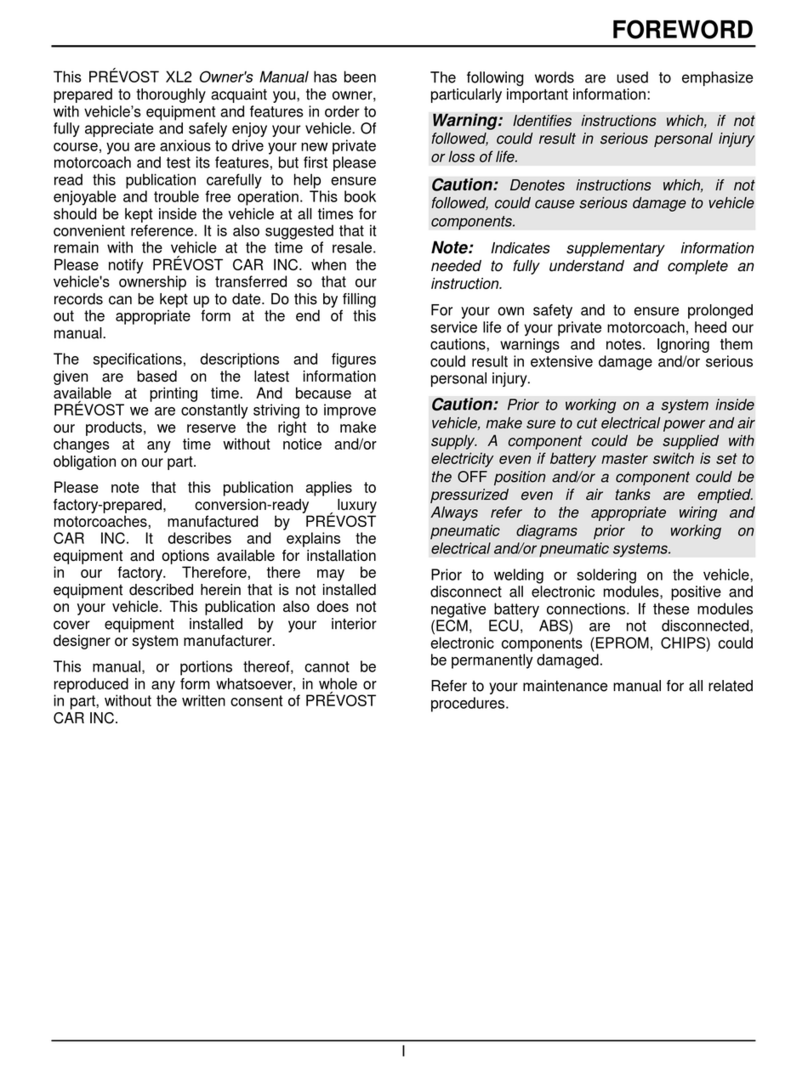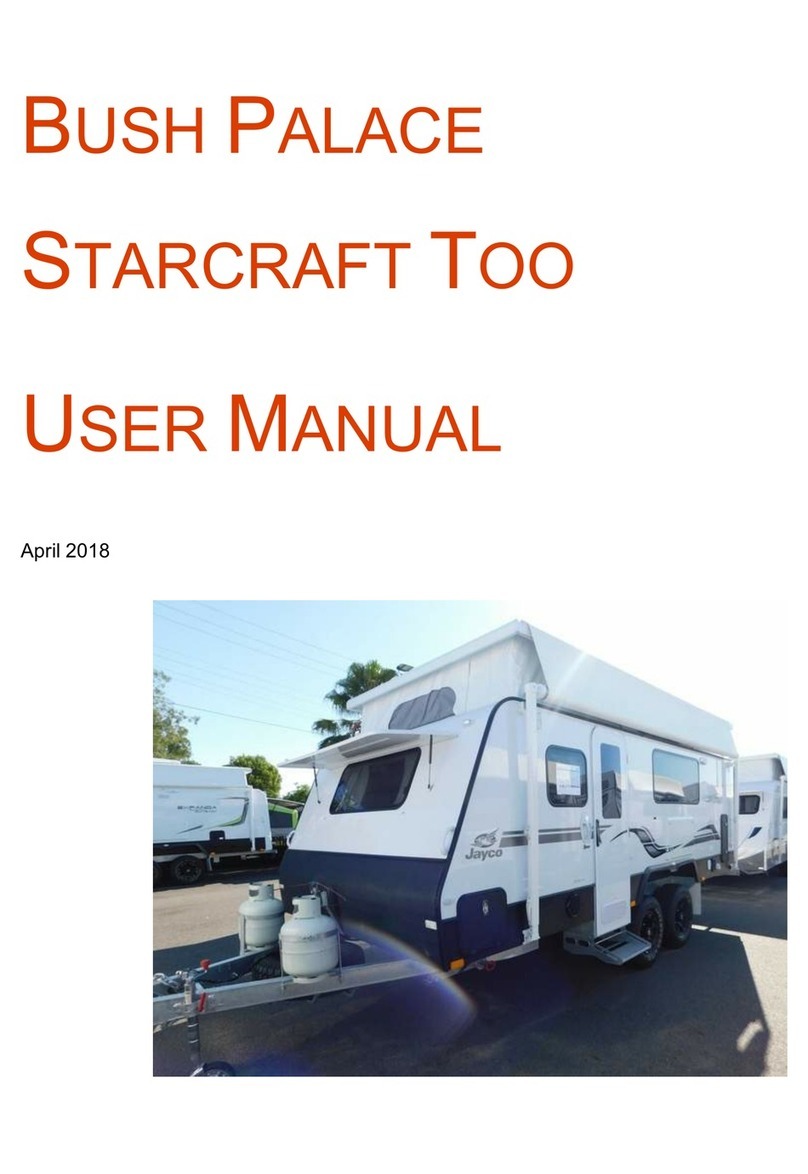
Section 26: VIP SLIDE-OUT
LIST OF ILLUSTRATIONS
FIGURE 1 : FRONT SLIDE-OUT ........................................................................................................................... 5
FIGURE 2 : REAR SLIDE-OUT ............................................................................................................................. 5
FIGURE 3 : SIDE INNER STOPPER ADJUSTMENT .................................................................................................. 5
FIGURE 4: UPPER INNER STOPPERS ADJUSTMENT .............................................................................................. 5
FIGURE 5: LOWER "IN LIMIT" STOPPER ............................................................................................................... 6
FIGURE 6: UPPER "IN LIMIT" STOPPER ............................................................................................................... 6
FIGURE 7 : EXTERIOR EXTRUSION ..................................................................................................................... 6
FIGURE 8: SECURITY PIN AIR CYLINDER REMOVAL .............................................................................................. 7
FIGURE 9 : FRONT SLIDE-OUT ROOF REINFORCING ROD ...................................................................................... 7
FIGURE 10 : RACK............................................................................................................................................ 8
FIGURE 11: PINION AND KEYLESS BUSHING POSITIONING .................................................................................... 9
FIGURE 12: PINION AND KEYLESS BUSHING (BOTTOM VIEW) ................................................................................ 9
FIGURE 13: MECHANICAL COMPONENTS (TYPICAL) ............................................................................................ 9
FIGURE 14 : KEYLESS BUSHING TIGHTENING .................................................................................................... 10
FIGURE 15 : TORQUE WRENCH FORMULA ........................................................................................................ 10
FIGURE 16 : KEYLESS BUSHING INSTALLATION INSTRUCTION ............................................................................ 12
FIGURE 17: ELECTRIC MOTOR AND SPEED REDUCTION GEARBOX ...................................................................... 13
FIGURE 18: MOTOR/GEARBOX ASSEMBLY MOUNTING BOLTS ............................................................................. 13
FIGURE 19: CLAMPING HUB POSITION ON SHAFTS ............................................................................................ 14
FIGURE 20: JAW COUPLING ............................................................................................................................ 14
FIGURE 21: SLIDE-OUT LEVEL ADJUSTEMENT ................................................................................................... 15
FIGURE 22 : SLIDE-OUT LEVELING ................................................................................................................... 16
FIGURE 23: TILT ADJUSTMENT ........................................................................................................................ 16
FIGURE 24 : RAIL POSITIONING ....................................................................................................................... 17
FIGURE 25: ACETAL PLASTIC BLOCKS .............................................................................................................. 17
FIGURE 26: REMOVE THE UPPER ACETAL PLASTIC BLOCKS WITH A PICKING TOOL ............................................... 17
FIGURE 27: LOWER ACETAL PLASTIC BLOCK INSERTION .................................................................................... 18
FIGURE 28 : FRONT SERVICE COMPARTMENT ................................................................................................... 19
FIGURE 29: PNEUMATIC CONTROL UNIT ........................................................................................................... 20
FIGURE 30 : SEAL ASSEMBLY .......................................................................................................................... 20
FIGURE 31: REAR SLIDE-OUT INFLATABLE SEAL AIR INLET ................................................................................. 20
FIGURE 32: WIPER SEAL CUT-OUT ................................................................................................................... 21
FIGURE 33: SLIDE-OUT 2" INSIDE – UPPER PART .............................................................................................. 22
FIGURE 34 : DASHBOARD SLIDE-OUT TELLTALE LIGHT ...................................................................................... 23
FIGURE 35: MAIN BREAKER IN MAIN POWER COMPARTMENT ............................................................................. 23
FIGURE 36 : SLIDE-OUT CONTROL PANEL ......................................................................................................... 23
FIGURE 37: FRONT SLIDE-OUT SENSORS ........................................................................................................ 24
FIGURE 38: REAR SLIDE-OUT SENSORS ........................................................................................................... 24
FIGURE 39 : MAGNETS ON SLIDE-OUT UNDERBODY .......................................................................................... 24
FIGURE 40 : SLIDE-OUT PANELS AND WINDOWS ............................................................................................... 25
FIGURE 41 : SIDE PANEL INSTALLATION ........................................................................................................... 26
FIGURE 42 : SIDE PANEL INSTALLATION ........................................................................................................... 26
FIGURE 43 : SIDE PANEL INSTALLATION – SIKA 221 APPLICATION ON STRUCTURE .............................................. 27
FIGURE 44 : SIDE PANEL INSTALLATION – SIKA 221 OR 252 APPLICATION ON STRUCTURE .................................. 27
FIGURE 45 : SIDE PANEL INSTALLATION – SIKA 206 G+P APPLICATION ............................................................... 27
FIGURE 46 : SIDE PANEL INSTALLATION – SIKA 221 OR 252 APPLICATION ON SIDE PANEL ................................... 27
FIGURE 47 : SIDE PANEL INSTALLATION – SIKA TACK+BOOSTER APPLICATION ................................................... 27
FIGURE 48 : SIDE PANEL INSTALLATION ........................................................................................................... 27
FIGURE 49 : TOP AND BOTTOM PANEL INSTALLATION - DOUBLE FACE ADHESIVE TAPE APPLICATION ..................... 28
FIGURE 50 TOP AND BOTTOM PANEL INSTALLATION - SIKA 206 G+P APPLICATION ............................................. 29
FIGURE 51 : TOP AND BOTTOM PANEL INSTALLATION - SIKA TACK+BOOSTER APPLICATION ................................. 29
FIGURE 52 : TOP PANEL INSTALLATION ............................................................................................................ 29
FIGURE 53 : BOTTOM PANEL INSTALLATION ..................................................................................................... 29
FIGURE 54 : FACE WINDOW - RUBBER SEAL INSTALLATION ................................................................................ 30
PA1217 3
